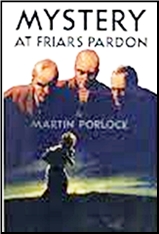Thu 15 Oct 2009
A 1001 MIDNIGHTS review: STUART KAMINSKY – Murder on the Yellow Brick Road.
Posted by Steve under 1001 Midnights , Authors , Bibliographies, Lists & Checklists , Characters , Obituaries / Deaths Noted , Reviews[3] Comments
by Marcia Muller:
STUART KAMINSKY – Murder on the Yellow Brick Road. St. Martin’s Press, hardcover, 1977. Paperback reprints include: Penguin, 1979; Ibooks, 2000.

Stuart Kaminsky is a film writer and critic as well as a mystery novelist, and he has put his expertise to good use in his series about 1940s Hollywood private eye Toby Peters.
The novels are a blend of fact and fiction — that is, of real Hollywood personalities (now deceased) and fictional characters.
Peters, investigator for the stars, is wise to the ways of Hollywood; he shares an office with a dentist, Shelley Minck, who provides much of the comic relief in these books; he eats abominably — burgers, Pepsis, milk shakes; he lives in “one of a series of two-room, one story wooden structures L.A. management people called bungalows”; and he has a running feud with his brother, Homicide Lieutenant Phil Pevsner (the real family name).
Murder on the Yellow Brick Road concerns the stabbing of a munchkin — one of L.A.’s many “little people” (they prefer that label to that of midget) — on the set on which The Wizard of Oz was filmed.
Judy Garland finds the body and calls Peters in a panic. Peters goes to MGM, where he meets Miss Garland, PR man Warren Hoff, Garland’s costume designer friend Cassie James, and Louis B. Mayer himself. Mayer hires Peters to conduct an investigation and divert any adverse publicity.
What follows is an entertaining story of Hollywood in its heyday, the inner workings of the film community, and the brotherhood of the “little people.” Peters meets such luminaries as Raymond Chandler, and pays a visit to Clark Gable at William Randolph Hearst’s fabled San Simeon.

Kaminsky does a good job of evoking both Hollywood of the Forties and the personalities of the various stars; his portrayal of the child/woman Garland is especially good.
Other Toby Peters novels include Never Cross a Vampire (1980), which features Bela Lugosi and William Faulkner in his screen-writing days; and He Done Her Wrong (1983), in which Mae West calls on Peters to find her missing, sizzling autobiography; and Down For the Count (1985), which features fighter Joe Louis.
———
Reprinted with permission from 1001 Midnights, edited by Bill Pronzini & Marcia Muller and published by The Battered Silicon Dispatch Box, 2007. Copyright © 1986, 2007 by the Pronzini-Muller Family Trust.
STUART KAMINSKY, R.I.P. According to his obituary in the Chicago Tribune, Stuart Kaminsky “died of complications from hepatitis and a recent stroke Friday, Oct. 9, in Barnes-Jewish Hospital in St. Louis […] He was an Army medic in the 1950s, when his family believes he got hepatitis C.” He was 75 at the time of his death.
Unusual for most mystery writers, Kaminsky was the creator of four distinctive series characters. Besides 1940s Hollywood PI Toby Peters, who appeared in 24 novels [see below] in which he rubbed shoulders with many movie stars of the day, Kaminsky also chronicled the adventures of (quoting again from the Tribune) “… Porfiry Rostnikov, a police inspector in Moscow [16 novels]; Abe Lieberman, a crusty but wise Chicago cop who works the streets with his younger partner, Bill Hanrahan [10 novels]; and Lew Fonesca, a former Cook County state’s attorney investigator now operating as a cut-rate private eye in Sarasota [6 novels].”
Kaminsky also wrote two novelizations of the TV series The Rockford Files, three novelizations of CSI: New York, two stand-alone suspense novels, three story collections, and was the editor of two recent crime fiction anthologies.
Without much fanfare, Stuart Kaminksy was without a doubt one of the more prolific mystery authors of recent years. He was a quiet giant in our field.
The Toby Peters series —
1. Bullet for A Star (1977)

2. Murder on the Yellow Brick Road (1977)
3. You Bet Your Life (1978)
4. The Howard Hughes Affair (1979)
5. Never Cross a Vampire (1980)
6. High Midnight (1981)
7. Catch A Falling Clown (1981)

8. He Done Her Wrong (1983)
9. The Fala Factor (1984)

10. Down for the Count (1985)
11. The Man Who Shot Lewis Vance (1986)
12. Smart Moves (1986)
13. Think Fast, Mr. Peters (1987)
14. Buried Caesars (1989)

15. Poor Butterfly (1990)
16. The Melting Clock (1991)

17. The Devil Met A Lady (1993)
18. Tomorrow is Another Day (1995)
19. Dancing in the Dark (1996)
20. A Fatal Glass of Beer (1997)

21. A Few Minutes Past Midnight (2001)
22. To Catch a Spy (2002)
23. Mildred Pierced (2003)
24. Now You See It (2004)












